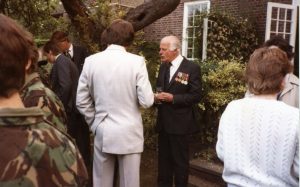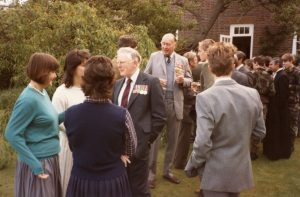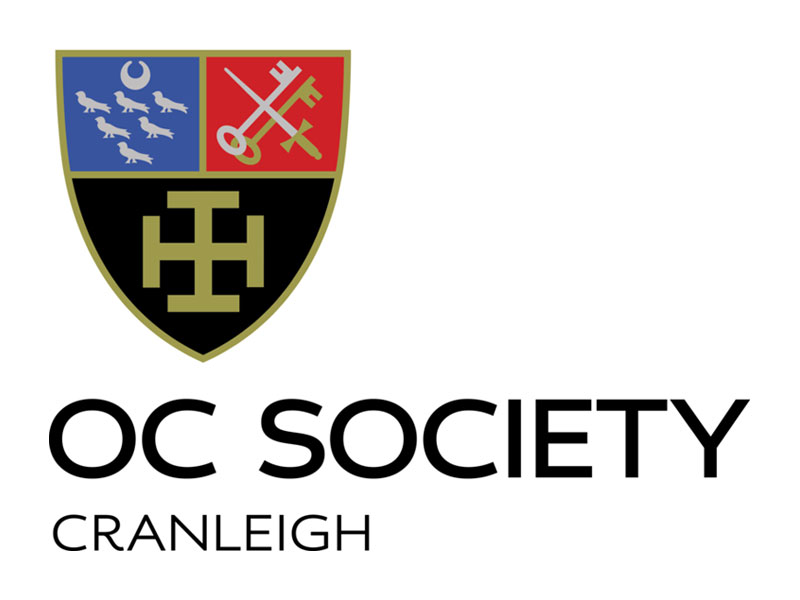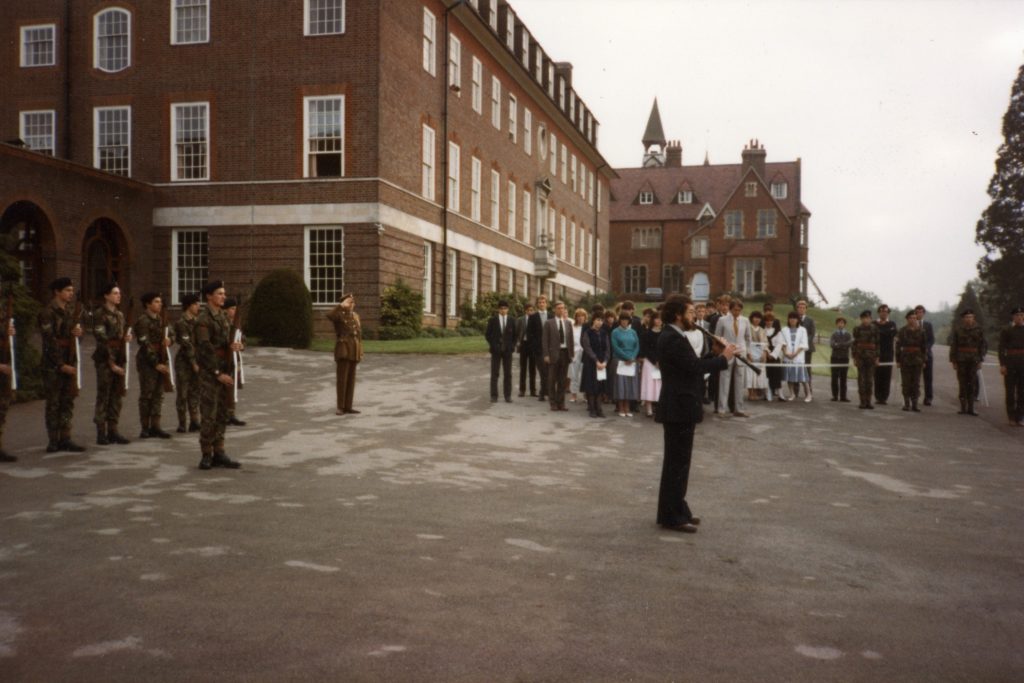As we mark the 80th anniversary of D-Day the number of those involved who are still alive is rapidly diminishing. Forty years ago Cranleigh marked the anniversary with a parade which included a number of memebrs of staff who had taken part, including Marc van Hasselt, the Headmaster.
van Hasselt was a 2nd lieutenant with the Essex Yeomanry working as a forward observation bombardment attached to Marine Command when he landed on the Normandy shore on part of Gold Beach. I was due to land at H Hour but the landing craft broke down and we didn’t get there until after lunch,” he recalled 70 years later. “I was very pleased.” He eventually landed in his tank on D-Day at Le Hamel, a small village just east of Arromanches. He said e had his first bath on D+11 in Bayeux.
Alan Smith wrote about the parade in that year’s Cranleighan magazine.
“If civilized society is to survive, pacifism can only be the luxury of a tiny minority.” We had heard John Lowry’s words in his Remembrance Day sermon, and it was fitting that he should have organised a Commemoration Parade at Cranleigh on 6th June, the anniversary of the D-Day landings in 1944.

Even to an avid follower of the Falklands campaign, the reality of war – particularly of what for my generation is a distant one -. is too easily obscured by the retrospective glamour of victory. To stand at attention at 6.30 am next to colleagues who had been part of that reality is a chastening experience. Theirs must have been a different commemoration from that of which I was capable.
John’s address, after the raising of the British, Canadian, American and French flags by boys from those countries, gave the assembled company a sense of both immediacy and perspective: “Obviously the focus of events is in Normandy, but here in Cranleigh our small ceremony gains added meaning from the presence of several veterans.
Tim Gregson, then a Lieutenant in the Royal Engineers, landed on D+2 and was soon involved in repairing bridges at the mouth of the River Orne. David Elliott, formerly of East House and now a School governor, landed in Normandy on D+11. At that time a Captain in the South Notts Hussars, RHA, he had already won the Military Cross for gallantry in North Africa: following the Normandy campaign he was to win a Bar to this medal in the assault across the Rhine. John Stephens, though not directly involved in the landings, was aboard the battleship ‘HMS Duke of York’ in the North Sea, guarding against a possible German naval incursion into the Channel. Ken Hill was an Air Engine Fitter in the Royal Air Force: based on an airfield in Suffolk, he worked night and day throughout the invasion maintaining British Spitfires and American Mustangs engaged in strafing the enemy in Northern France.”

We heard a recording of Communiqué 1 issued by Supreme Headquarters Allied Expeditionary Force at 09.00 hrs on D-Day; a powerful declaiming by John Savage of Henry the Fifth’s speech before Agincourt; a recording of Richard Dimbleby’s BBC despatch from Normandy; and, following a silence in remembrance of the dead, a performance on the clarinet by Michel Marty of ‘La Marseillaise’ – the instrument’s reedy timbre cutting movingly through the still air of the summer morning.
A champagne breakfast followed in the Headmaster’s garden: one was grateful to enjoy it, 40 years on.

